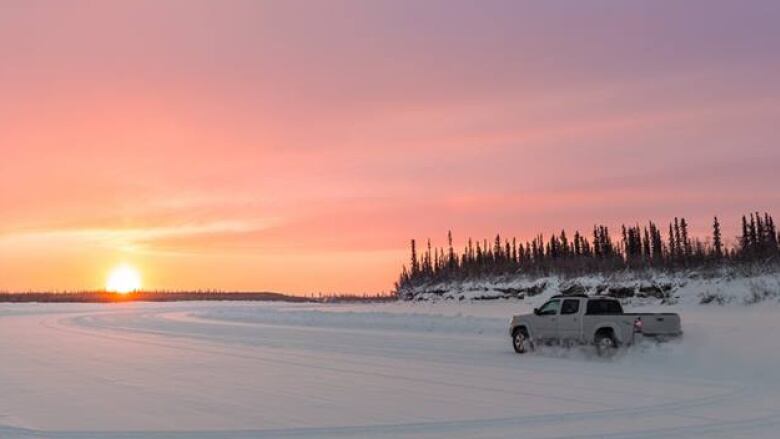Unusual warm February weather hits most of the N.W.T
Communities seeing temperatures 10 degrees warmer than normal

It's not out of the ordinaryin the Northwest Territories for a few days of warmer weather here and there during thewinter season.
But this winter seems different for Peter Bertrand, an elder from Fort Liard.
He says they had chinook-like weather last Sunday where the temperature spiked to 10 C.
"Fort Liard's been known as the tropics of the North, I guess," he says. "We had rain late in the afternoon there.About 12 o'clock at night I stepped out, and there was a lot of stars."
- Warm weather, low snow levels impact N.W.T trapping season
- Weather from the cloud: How hobbyists inform the Northern forecast
Bertrand says he and his brother went hunting last weekend and got a moose. But he is also concerned what effect the weather will have on wildlife.
"The weather's going to have a lot of effect on animals, you know, like the caribou, the moose, and maybe even the bears. The snow's melting off, the snow's kind of acting as insulation. It could have a big effect on the animals."
"Snow was really soft. Moist snow. Trudging through that snow, it felt kind of heavy."
But Bertrand says the warmer weather also saves him money sincehe spends less heating his home.
Warmer weather across the territory
Warmer temperatures have spread across much of the N.W.T., explained Brian Proctor, an Environment Canada meteorologist.
He says "high amplitude fluctuations" in the jet stream are"sort of plunging... eastwards across the southern portion of the N.W.T. and it's brought a lot of warm air into areasaround Great Slave Lake."
Proctor says it is responsible for much of the freezing rain seen in communities like Lutsel K'e, Fort Smith, and Hay River in the last six weeks.
In Yellowknife, Proctor says average temperatures of -20.5 Clast month was five degreeswarmer than normal,making it the eighth warmest in 75 years.
The Fort Simpson area experienced the sixth warmest January in more than a century with an average temperature of -17.7 Ccompared to -24.2 C.

Proctor says the biggest changes happened inInuvik. Last month, Inuvik's average temperature was -18.5 Ccompared to its average normal of -26.9 C. Making it the thirdwarmest January on record.
"We've had some very very warm temperatures across much of the NWT. There's been some interspersed with some colder spells but not the extended cold that we typically would see in January and February," Proctor said.
Despite the warmth, Proctorsays temperatures areexpected to fall back in line with the seasonal averages for the rest of Februaryin many of the communities across the N.W.T.
But he says in the longer term residents may see warmer weather become the norm.
Truckers need cold for winter roads
That might not be good news for Bassett Petroleum. The company hauls fuel to remote communities mainly accessible by a winter ice road.
Norm Bassett, the vice president of Bassett Petroleum, says he has noticed the warmer temperatures in the past couple of years. Last year he says it caused some stress toward the end of the winter road season.
"A lot of melting conditions toward the end of March and it was a real time crunch to get the supplies in," he said.
"We never really got the thick ice to do the communities like Wekweti, Gameti, and Whati. Those conditions were thinner ice because of a lack of colder weather. So we had to do smaller load sizes."
He says to get supplies into the communities depends largely on the quality of the ice road.
"If there's a lack of snow or a lack of freezing, they still build the road and the ice still seems to freeze on the rivers but we do it at lower load capacities and on rougher terrain," he says.
Bassett says because they deliver dangerous goods it adds more stress on their mechanics and drivers to keep the equipment up to safe standards. He says drivers have to slow down, which increases travel time, and puts added pressure to put more trucks on the road to keep up with demand.
Bassett says he hopes to see much more cooler temperatures in the next few years.












_(720p).jpg)


 OFFICIAL HD MUSIC VIDEO.jpg)
.jpg)



























































































